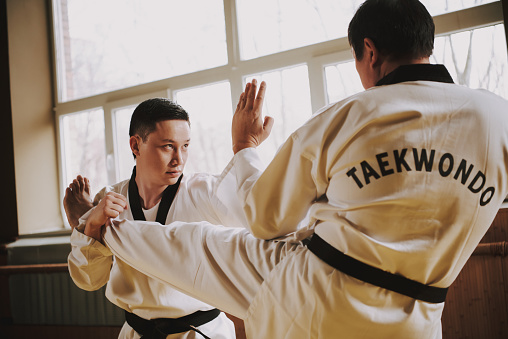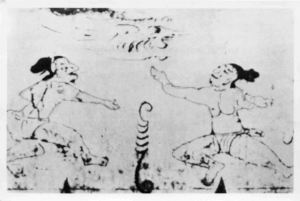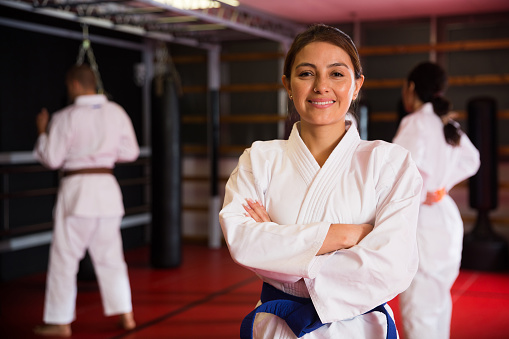A Berif History of Teakwondo(Mixed Martial Arts) (PART 1)
Taekwondo might be considered as old as history itself. Since man originally figured out how to supportive of tect himself, one might say that the crude elements of taekwondo(Mixed Martial Arts) had precipitously emerged. This type of self-protection turned into a fundamental piece of day to day existence that was gradually streamlined and organized into a unique and powerfully efficient weapon for survival.
During the time spent the improvement of taekwondo(Mixed Martial Arts), a new feeling of awareness with both physical and mental potential in the human body was found. Through a myriad of thought, upgrades, experimentation, and experience, this expertise of unarmed battle combat became what is today, a martial art in technically moralized, scientifically and experimentally formalized.
Before the birth of Christ:
Before the birth of Christ, the three kingdoms of Koguryo, Baek-je, and Silla had been laid out on the landmass presently known as Korea. In each one of kingdom, the abilities and strategies su bak or kwon bupsu, later on called tae kyon, the predecessors of tae-kwondo, were at that point profoundly modern. They were a fundamental part of the tactical preparation of soldiers as a weapon dependent exclusively upon solely on fists, hands, and feet.
The absolute earliest known features of taekwondo can be found in the murals of the royal tombs of Kakjeochong and Mooyongchong of the Koguryo time frame. These murals obviously show actual battle developments, battling positions, and abilities intently looking like the present developments of taekwondo.
From the murals:
From the murals, we can envision that taekwondo was then already familiar to the people of Koguryo. What’s more, since it was an exceptionally regarded sport among peoples, it was consequently portrayed in paintings and artistic creations in tombs.
Significant narrative proof of the hand to hand fighting soul in Baek-je additionally exist. In that time era, the sports was formally energized, and not just the military had their soldiers prepared in taekwondo, arrow based weaponry, and horse riding, the overall people also were heroes who succeeded in human expression arts.
The temples and shrines during the Silla tradition created a large numbers stone engrav-ings portraying a variety of taekwondo structures. During the rule of Chin Heung, twenty-fourth lord of Silla, Korean culture and combative techniques rose to prospering levels. Silla, at that point, was a simple frail and tiny kingdom, continually bothered and undermined by its all the more impressive neighbor kingdom of Koguryo and Baek-je. Be that as it may, Silla didn’t mix and showing off itself abilities with national character of strength and integrity, existed for 992 years.
Advancement of the combative martial arts:
At the time the most outstanding contribution to the advancement of the combative martial arts techniques exuded from a elite officer called Hwa Rang Do — a military and social orga-nization for honorable adolescents framed by King Chin Heung. The Hwa Rang Do were thoroughly prepared not just in the typical games of bows and arrows, target practice, and horsemanship, yet additionally practice of mental and actual discipline, as well as many types of hand and foot battle ing. Through their unrelenting efforts to overcome fierce waterways and tough landscape, the gathering of youthful knights developed strong and fearless. Their merciless conflict to guard their nation and their refinement of their spirits turned out to be notable all through the landmass. Their victories helped to advance the movement for the unification of the three separated kingdoms for the first time in the history of the Korean Peninsula.
Koguryo tradition (A.D. 935-1392):
The Koguryo tradition (A.D. 935-1392) further promoted the study of unarmed battle combat. It was during this period that the mixed martial arts were experimentally examined and organized. They were subsequently embraced into the Yi period (A.D.1392-1910).
Be that as it may, strong anti-military sentiment opinion before long plagued among the decision classes and tae kyon was gener-ally and straightforwardly degraded. Toward the finish of the Yi line, the combative techniques seemed to have lost all hints of their unique life and liveliness in the midst the period of civil enlightenment.
For a very long time after the turn of the 20th hundred years, the Japanese control of Korea deny the act of any of the martial arts. Just in mystery were artistic expressions given to few understudies and kept alive by fervent defenders, like Song, Duk Ki and Han, Il Dong.
Korea was liberated in 1945:
After Korea was liberated in 1945, numerous dojang (combative techniques establishments) rushed out, each declaring its presence with its own specific norm of style and strategy. It was by the by the unfolding of another day for the old specialty of tae kyon.
Its recovery in various structures can make sense of that it has effectively remained profoundly embedded in the texture of Korean culture to have the option to bloom and bloom back to its full tones.
After 10 years, taekwondo was chosen as the new name of the national martial arts. The name looks like the old name of tae kyon and it impeccably portrays the workmanship (do) of hand (tae) and foot (kwon).
Theory of Power:
The effective application of power in taekwondo demands that a person be qualified in appreciating and understanding the fundamentals of physical balance, concentration, speed and respiration. The intelligent use of them literally means that untapped power of
immense proportions could be successfully attained. In our present discussion on the theo- ry of power, we shall focus on the truncal twist which is more difficult to learn but which has been considered the supreme contributor in the whole process of power generation.
In any action:
In any action, there is one form of reaction, as for example, a side kick where one leg is thrust out in one direction while at the same time, the upper portion of the body, i.e. head, shoulder and trunk, moves in the opposite direction. In this manner, the reactionary force of the latter movement adds to the former, thus effecting much more power.
But, whatever the power that is generated, its maximum is not achieved without trun- cal movements. The central trunk twist plays the principle role in physical movement.
Indeed, the very first bodily movement should begin from the trunk, twisting on a vertical axis of the body, rotating the pelvis in turn to carry the leg, torso, and shoulders into their finals paths.
Sufficient practice of the twisting of the trunk will in time lead to spontaneous trun- cal twist in each and every action. A good test on whether a person is developing mastery of the truncal twist is the elbow breaking of boards.
A truncal countertwist on a vertical axis, and delivery of an elbow strike onto a pile a thick boards requires proper practice and employment of the countertwist.
This brings us to the interesting aspect regarding the distribution of the variety of strikes. A strike, whether by kicking, punching, or other use of body parts for attack- ing, produces a direct effect on the known target.
And it is the effect, such as the extent of target damage, tissue injury, contact time, area of displacement, etc., which ultimately determines the characteristic of the strike itself.
In striking a target:
In striking a target, if contact time and displacement are zero or minimal, the strike would be of the First degree, as it is in free sparring. A Second-degree strike renders the tar- get maximal extent of damage for the gravity of the force used. The total energy is dispersed instantaneously.
For a Third-degree strike, contact time is relatively longer than the First- and Second-degree strikes because this time the attacking force pushes a target for a variable distance whereby all of the power is administered throughout the total displacement.
Take Care. Visit Our Other Blogs & Product.
Any Question, Any Problem. Contact Us!
Please Like, Share & Below Comment.
Thanks for Reading❤️.





